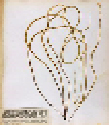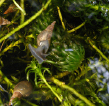Данная статья является реферативным изложением основной работы. Полный текст научной работы, приложения, иллюстрации и иные дополнительные материалы доступны на сайте III Международного конкурса научно-исследовательских и творческих работ учащихся «Старт в науке» по ссылке: https://www.school-science.ru/0317/3/28476.
Introduction
We live in Saint-Petersburg, one of the biggest cities in the Baltic region. It is also one of the largest ports of the Baltic Sea.
At school we often talk about ecology at the lessons or in the after-school activities, so we know that sea-, air – and land- pollution is one of the most important problems for all countries on our planet. We live on the shore of the Finnish Gulf, that’s why we decided to research the ecological problems of the Baltic. Reading books about nature and watching films about wildlife we see, that there are a lot of endangered animals and birds in the world. We tried to find out, what endangered fish and animals lived in the Baltic. Of course, we are interested in a question: How can people help them?
We asked our classmates the following questions:
Which of these fish and animals live in the Baltic Sea?
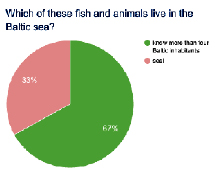
According to our survey, most of our students (67%) can name more than four inhabitants of the sea. Almost third of them think that only a seal lives in the sea. Summing it up, our students are interested in the nature and wildlife of the region.
What endangered animals and fish of the Baltic Sea do you know?
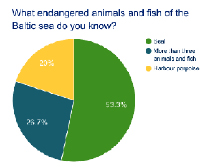
Our survey showed that more than a half of the students knew a seal as one of the endangered animals of the sea. About one third named more than three fish and animals that are endangered now. 20% of them believed that people should save the harbor porpoise.
Aims of our project:
- to learn more about the environmental problems of the region;
- to make an encyclopedia of the endangered fish and animals of the Baltic Sea;
- to tell our classmates and schoolmates what animals and fish are becoming extinct now;
- to find some advice how to improve the situation in the region.
To reach our aims we researched:
- the ecological situation of the Baltic
- the causes of environmental disaster in the Baltic sea
- what fish and animals are endangered now
- how to save the inhabitants.
We think this research is very important for our classmates and other students of school. They should know more about our region, use environmentally friendly things in daily life and not to hurt the nature and animals.
Our project can be used by the teachers of our school during the lessons or in after-school activities. We also can tell the learners of the elementary school about the Baltic Sea, its inhabitants.
Ecological education is extremely important today.
Geography of the Baltic Sea
The Baltic Sea is a northern semi-enclosed sea and the largest brackish water body in the world. Its catchment area is 1,633,290 km2, four times the area of the sea itself, which is 392,978 km2.
The Baltic Sea is the youngest sea of our planet. It’s only 10.000 years old. It’s located in the north-eastern part of Europe. It is the sea of the Atlantic Ocean. It includes the Gulf of Bothnia, the Gulf of Finland, the Gulf of Riga, and the Bay of Gdansk. The Baltic is the largest brackish water system in the world. It is unique in that there are areas where freshwater; brackish water and marine species are all present. Unfortunately, the Baltic Sea is the dirtiest sea on our planet.
The Sea surrounds the coast of nine European countries and has about 80 million people living around the Sea. Sweden has the longest coast among other countries of the Baltic Sea region: about 3,2 thousand km of the total 8 thousand km of the Baltic coast length. Finland has the second place – its length of the Baltic coast is equal 1,1 thousand km. Other countries included in the Baltic region are: Denmark, Germany, Poland, Russia, Lithuania, Latvia and Estonia. Every year, the date March 22 is celebrated as Day of the Baltic Sea by a decision of Helsinki Commission (HELCOM). The Baltic Sea is an example of eco-geographical whole, when environmental challenges of the Baltic may be solved with participation of all countries.
Ecology of the Baltic Sea
We found out that: In our Baltic region there are nine countries – Russia, Sweden, Finland, Estonia, Latvia, Lithuania, Poland, Germany and Denmark. About 80 million people live there. An important point is that there are lots of big industrial cities lying on the Baltic coast in which people suffer from the waste pollution covering sea water, soil and air. Industrial-household waste products and waste products of agriculture, oil and oil products, artificial radionuclides from nuclear plant engineering causes the basic part of water pollution. Heavy metals are entered in the Baltic Sea waters with an atmospheric precipitation.
One of the main ecological problems is connected with significant radioactive pollution of the sea as a result of Chernobyl accident in 1986.
There is a lot of the old weapon on the sea bottom since the First and Second World Wars. There are a lot of sunken ships there. During the Wars, a lot of bombs were dropped into the sea, some of them were toxic. By an average estimation at the bottom of the Baltic Sea there are 267 thousand tons of bombs, shells and mines. There are more than 50 thousand tons of fighting poison gases inside of them.
A lot of cargo ships, tankers, numerous tourist routes, active fishing make the Sea one of the busiest seas in the world. It harms the sea and its inhabitants, of course. The Baltic Sea has been polluted with oil for many years. The air temperature in the Baltic Sea region is growing .Temperature may rise by 4-6 degrees. This will be a big problem Baltic Sea and its inhabitants.
Wildlife
The number of species in the Baltic Sea is much lower than in other seas, such as the North Sea. This lower diversity is mainly due to three factors: the difficult salinity conditions, the short history of the sea in its current form and the lack of intertidal shores and great depths. The brackish water and large temperature range create a challenging environment. Both marine and freshwater species experience difficulties when faced with the brackish water of the Baltic Sea.
The Baltic Sea is very different from other seas of our planet, as the level of salinity of the water in it does not exceed 7-8%. Very low level of salinity has led to the fact that along with the marine fish in the Baltic Sea thrive and river.
The adult size of many species in the Baltic Sea is much smaller than elsewhere. Marine examples of species of smaller adult size are the Pacific blue mussel (photo 1) and the sea lace (photo 2); freshwater examples are the greater pond snail (photo 3) and many fish such as perch, pike and vendace.
In our sea there are freshwater fish such as:
- perch, pike, bream, whitefish, grayling, roach, gudgeon, perch and ruff;
- In our sea there are marine fish such as:
- cod, mackerel, many types of herring and even flounder, gobies, sea trout and eelpout.
In the Baltic Sea are many different types of algae.
Most of all there green algae.
|
photo 1 |
|
|
photo 2 |
|
|
photo 3 |
|
|
photo 4 |
|
|
photo 5 |
|
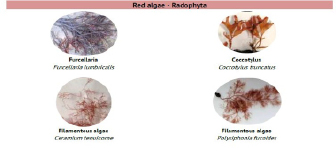

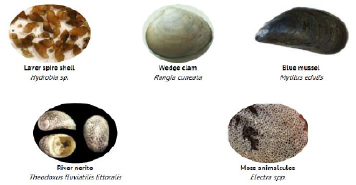
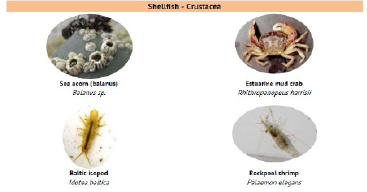

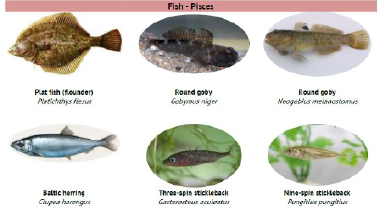
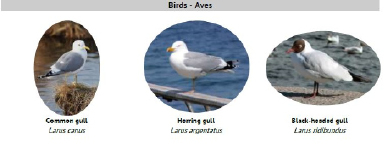
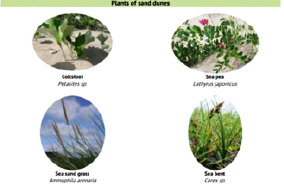

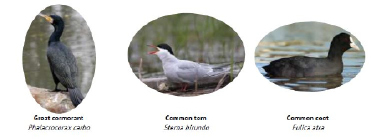
There are a lot of species you can find on the shore, on the bottom, in water.
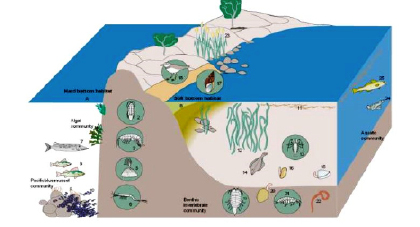
Some inhabitants of the Baltic Sea: 1 – filamentous algae, 2 – isopode Idotea baltica, 3 – sandhopper, 4 – lamellar algae, 5 – sea acorn, 6 – opossum shrimp, 7 – pike, 8 – perch, 9 – oligochaete worm, 10 – blue mussel, 11 – plankton, 12 – ulvae algae, 13 – crayfish, 14 – plat fish (flounder), 15 – bivalve mollusk, 16 – soft shell clam, 17 – gastropod, 18 – common sandpiper, 19 – Saduria entomon, 20 – Macoma baltica, 21 – isopod, 22 – polychaete worm, 23– reed, 24 – round goby, 25 – cod
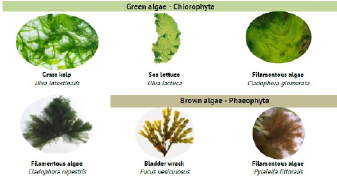
The ecological situation in the Baltic region is very dangerous, so you can find a lot of the species in the list of endangered inhabitants.
Библиографическая ссылка
Имхасина А., Тарасова В. ИСЧЕЗАЮЩИЕ ВИДЫ ФАУНЫ БАЛТИЙСКОГО МОРЯ // Старт в науке. 2017. № 4-2. ;URL: https://science-start.ru/ru/article/view?id=719 (дата обращения: 08.11.2025).


